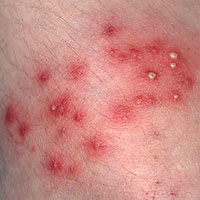Antibiotic-Resistant Staphylococcus aureus

MRSA outbreak.
Methicillin-Resistant Staphylococcus Aureus (MRSA) is a strain of Staphylococcus Aureus that has become resistant to methicillin and other similar antibiotics in its class (oxacillin, cloxacillin, and flucloxacillin) used to treat it. For this reason, it is frequently referred to as a superbug. MRSA infections have been classified into two categories based on their origin:
1. HA-MRSA (Healthcare-Associated MRSA):
MRSA that is linked to healthcare facilities like hospitals and nursing homes; associated with the elderly, the very sick, patients with open wounds or catheter; first appeared in the 1960’s.
2. CA-MRSA (Community-Associated MRSA):
MRSA that has no connection to healthcare facilities; predominantly traced to intravenous drug users, but also associated with people with skin disorders or poor hygiene; first seen in the 1980’s.
MRSA infections are difficult to treat and can lead to fatal bone or blood infections, since there are fewer effective antibiotics for treatment. MRSA is currently treated with the antibiotic, vancomycin; however, new Staphylococcus aureus bacterium that is resistant to vancomycin called vancomycin-resistant Staphylococcus aureus (VRSA) has appeared in recent years.
Fact:In the 1990’s, MRSA infections became the number one infection in hospitals (HA-MRSA), reaching endemic levels by the twenty first century in healthcare facilities.
Video about MRSA!
